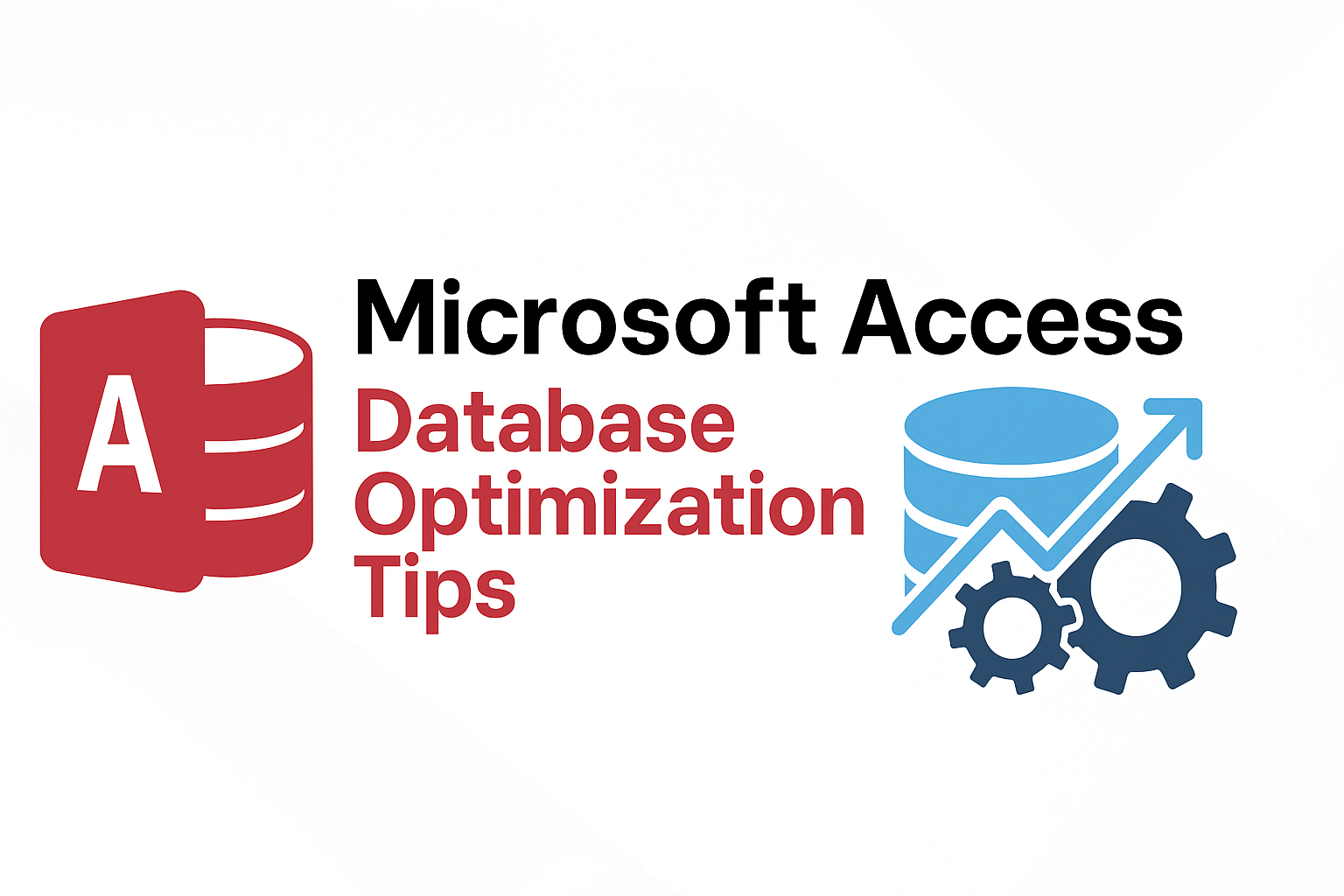Microsoft Access Database Optimization Tips
Microsoft Access is a widely used database tool, but performance issues can arise if the database is not optimized. Implementing best practices ensures faster queries, smaller file sizes, and a more reliable multi-user environment.

Compact and Repair Regularly
Access databases tend to grow in size over time. Using the Compact and Repair feature reduces file size, improves performance, and prevents corruption. Schedule regular maintenance to ensure the database remains optimized.
Split Your Database
Splitting into a back-end (tables/data) and front-end (forms, queries, reports) improves performance, reduces corruption risk, and allows multiple users to access data simultaneously without slowing down the system.
Optimize Queries
Efficient queries are critical for performance. Use indexed fields in joins and criteria, avoid SELECT *, and minimize nested subqueries. Test queries regularly and refine them for speed.
Use Indexing Wisely
Proper indexing can dramatically improve query performance. Index primary keys, foreign keys, and frequently filtered fields. Avoid over-indexing as it can slow down data modifications.
Normalize Your Data
Normalization reduces redundancy and ensures data integrity. Separate tables by entity and use relationships to connect them. Avoid storing repeating groups or unnecessary data in single tables.
Limit Use of Calculated Fields
Complex calculations in queries or forms can slow performance. Where possible, pre-calculate values or use VBA code to handle heavy computations efficiently.
Avoid Large Attachments
Storing large files in Access (like PDFs or images) increases file size and slows performance. Consider storing files on a server and saving links in the database.
Optimize Forms and Reports
Minimize controls and subforms to reduce load times. Use unbound forms for data entry where appropriate and avoid complex conditional formatting for better performance.
Use Parameterized Queries
Parameterized queries improve security and speed. They reduce the chance of SQL injection and ensure that only necessary data is returned.
Regularly Monitor Performance
Track slow queries, large tables, and database growth. Regular monitoring helps identify bottlenecks and allows for timely optimization before users experience issues.
Archive Old Data
Large amounts of historical data can slow down queries. Move old data to separate archive tables or databases to keep your main database lean and fast.
Backup and Maintain Security
Regular backups protect against data loss, while proper user permissions ensure security. Implement role-based access and encryption where required.
